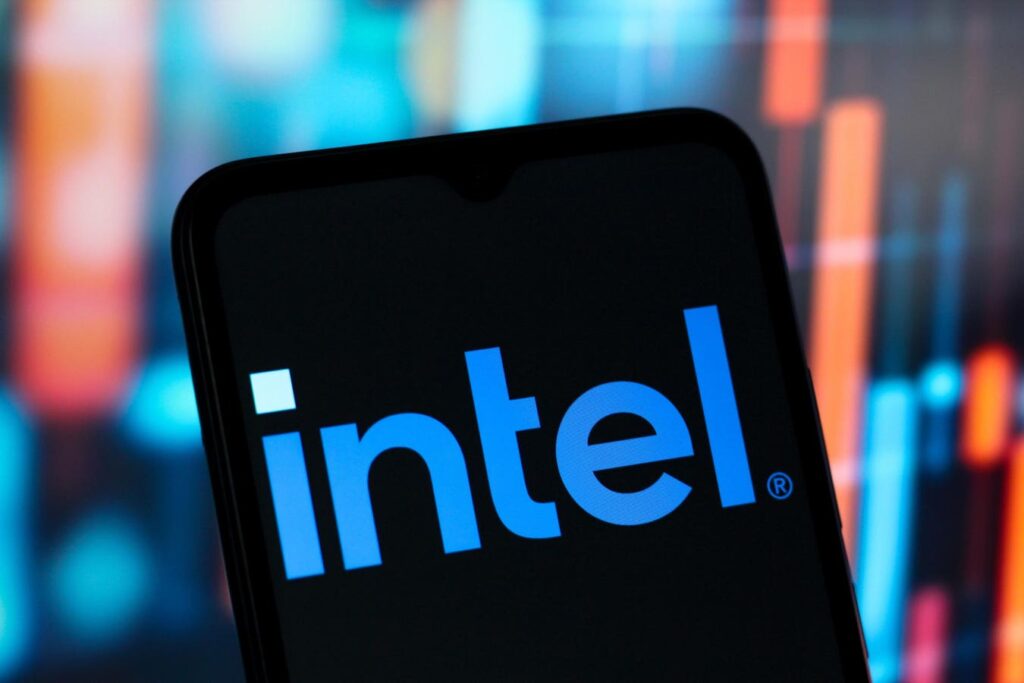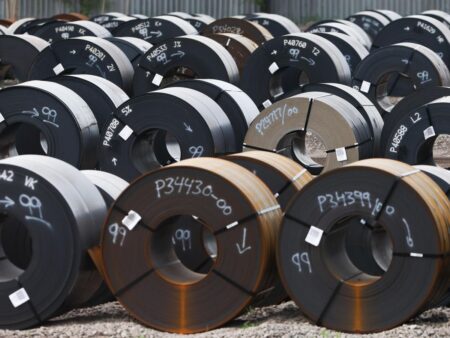Intel (NASDAQ:INTC) has been fully committed to transforming itself into a global foundry leader, especially as the competition for next-generation 2-nanometer (nm) chips intensifies with its 18A process at the heart of its strategy. Over the last four years, the company has poured more than $90 billion into capital expenditures aimed at expanding its foundry operations and narrowing the gap with TSMC and Samsung. The stakes are considerable. The foundry segment suffered losses of nearly $13 billion last year, and Intel’s shares have decreased by nearly 50% since their peak in 2024. So, how does Intel’s new technology compare with that of its rivals?
Process Nodes And Intel’s 18A Advancements
In the realm of chip manufacturing, “nm” indicates the size of the process node in nanometers. Generally, smaller nodes allow for an increased number of transistors to be integrated into a designated area, leading to enhanced performance, improved energy efficiency, and the ability to accommodate more intricate designs. This is particularly crucial for high-performance applications such as AI, smartphones, and advanced server tasks. However, transitioning to smaller nodes is a costly and complicated endeavor. Initial yield rates are often lower, and the investment required to construct and equip fabrication facilities for such advanced production is substantial.
Intel is optimistic that its new 18A process, which employs 1.8nm technology, is presently in risk production. Here, initial batches are utilized to evaluate and enhance the manufacturing process before mass production begins. Laptops utilizing 18A-based processors are already being sampled with original equipment manufacturers (OEMs). This process creates chips employing technologies like RibbonFET gate-all-around transistors and PowerVia backside power delivery. These innovations permit the creation of smaller transistors that enhance performance and energy efficiency. PowerVia could provide significant benefits for AI applications as well as high-performance computing tasks.
Is Intel Capable of Competing with TSMC?
The rollout of Intel’s 18A is occurring just as its competitors are gaining momentum. TSMC, the leading player in the foundry market, commands over two-thirds of the overall foundry space and is expected to retain its lead in the 2nm generation by a considerable margin. TSMC plans to commence mass production of its 2nm process in the latter half of 2025 at its fabrication facilities in Taiwan. TSMC’s 2nm process represents its first incorporation of gate-all-around (GAA) transistor architecture, which promises a 10% to 15% enhancement in performance and up to 30% reduction in power usage in comparison to its 3nm node. Furthermore, TSMC has demonstrated exceptional manufacturing prowess. As reported by the Taiwan Economic Daily, current yields for the 2nm process are at 60%, indicating that out of every 100 dies sliced from a silicon wafer, 60 meet quality control standards. That’s a remarkable statistic. Some reports from March estimated that Intel was only achieving yields of between 20% to 30% on its 18A process, while Samsung was reportedly achieving 40% yields on its rivaling technology.
TSMC’s customer base is also extensive and loyal, featuring major clients like Apple and AMD that have already committed to utilizing its 2nm process. Even Intel is diversifying its strategy, engaging TSMC as an alternative source for some of its forthcoming Nova Lake desktop processors, anticipated in 2026. Counterpoint Research projects that TSMC may achieve full utilization of its 2nm capacity by the fourth quarter of 2025.
Now, Intel asserts that the 18A process will provide improved performance and reduced power usage compared to TSMC’s competing node. Nonetheless, TSMC’s chips are likely to maintain an edge in terms of density and cost. Compounding Intel’s difficulties, the company has experienced ongoing delays in introducing new nodes, and its 18A process has already witnessed some external clients withdraw after initial trial production, resulting in demand that fell short of expectations. Meanwhile, TSMC possesses the scale, ecosystem, and a broad array of loyal customers who are ready to embrace its 2nm technology, potentially complicating matters for Intel.
Not only has Intel’s stock performed poorly, but its annual returns have also been significantly more volatile than those of the S&P 500. The stock’s returns were 6% in 2021, -47% in 2022, 95% in 2023, and -60% in 2024. In contrast, Trefis High Quality (HQ) Portfolio, which includes 30 stocks, shows much lower volatility. It has significantly outperformed the S&P 500 over the past 4 years. What accounts for this? As a collective, HQ Portfolio stocks have delivered better returns with reduced risk compared to the benchmark index; a more stable experience, as reflected in HQ Portfolio performance metrics.
Read the full article here
















